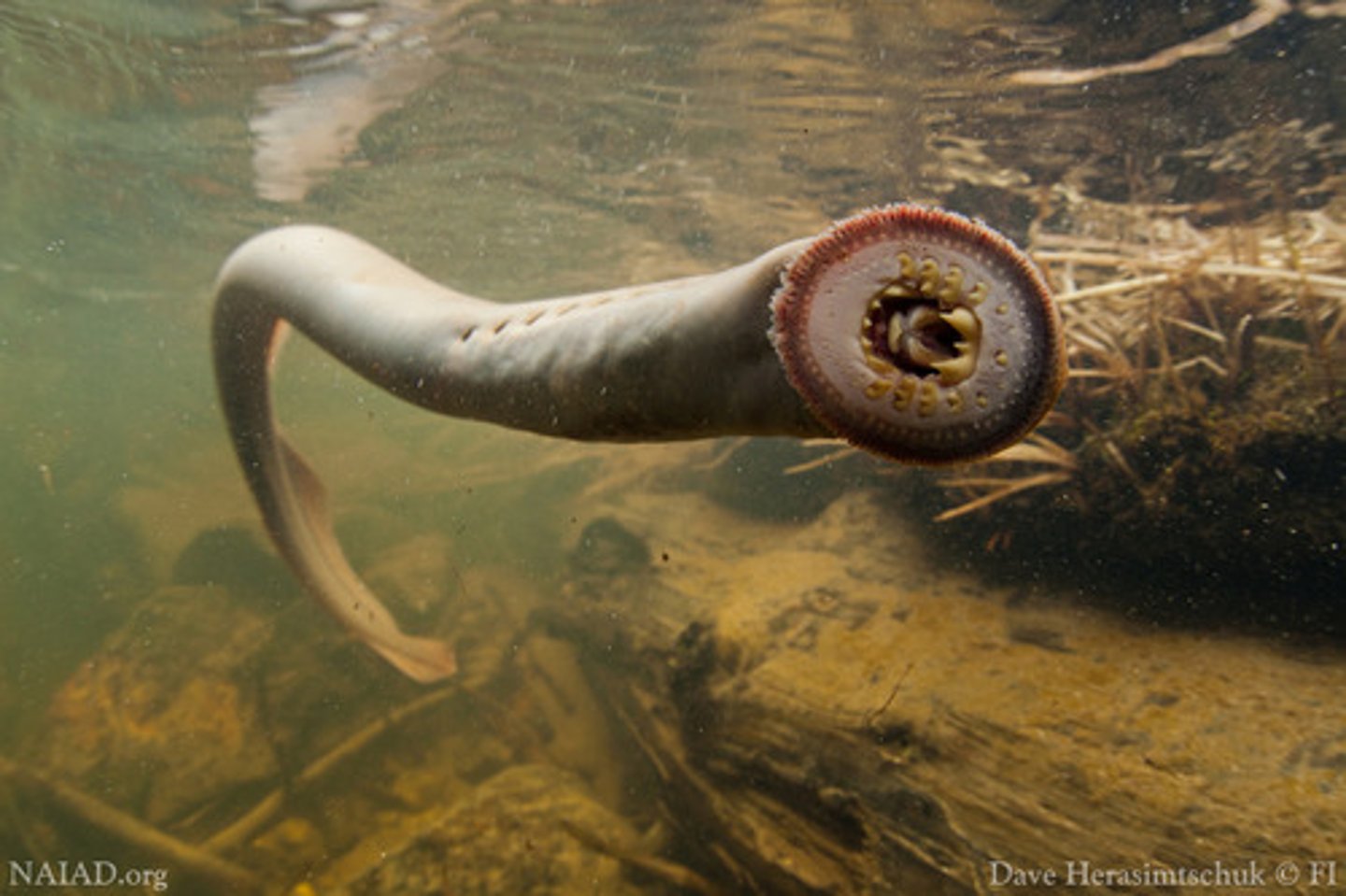ZOOl 224 Chordata, Vertebrata, and relatives
1/33
There's no tags or description
Looks like no tags are added yet.
Name | Mastery | Learn | Test | Matching | Spaced |
|---|
No study sessions yet.
34 Terms
Vertebrates are multicellular ______, _______, _______ animals
Eukaryotic, heterotrophic, eumetazoan
Describe the higher level taxa of vertebrata
Domain Eukaryota (cells with a nucleus), Kingdom Animalia/Metazoa (multicellular eukaryotes), Subkingdom Eumetazoa (true tissues organized into germ layers, excluding sponges), Clade Bilateria (bilaterally symmetrical)
Describe why Vertebrates are Eumetazoans
They are triploblastic (3 germ layers) with true tissues (a collections of cells that can work together to perform a task). The three layers are the endoderm, mesoderm, and ectoderm.
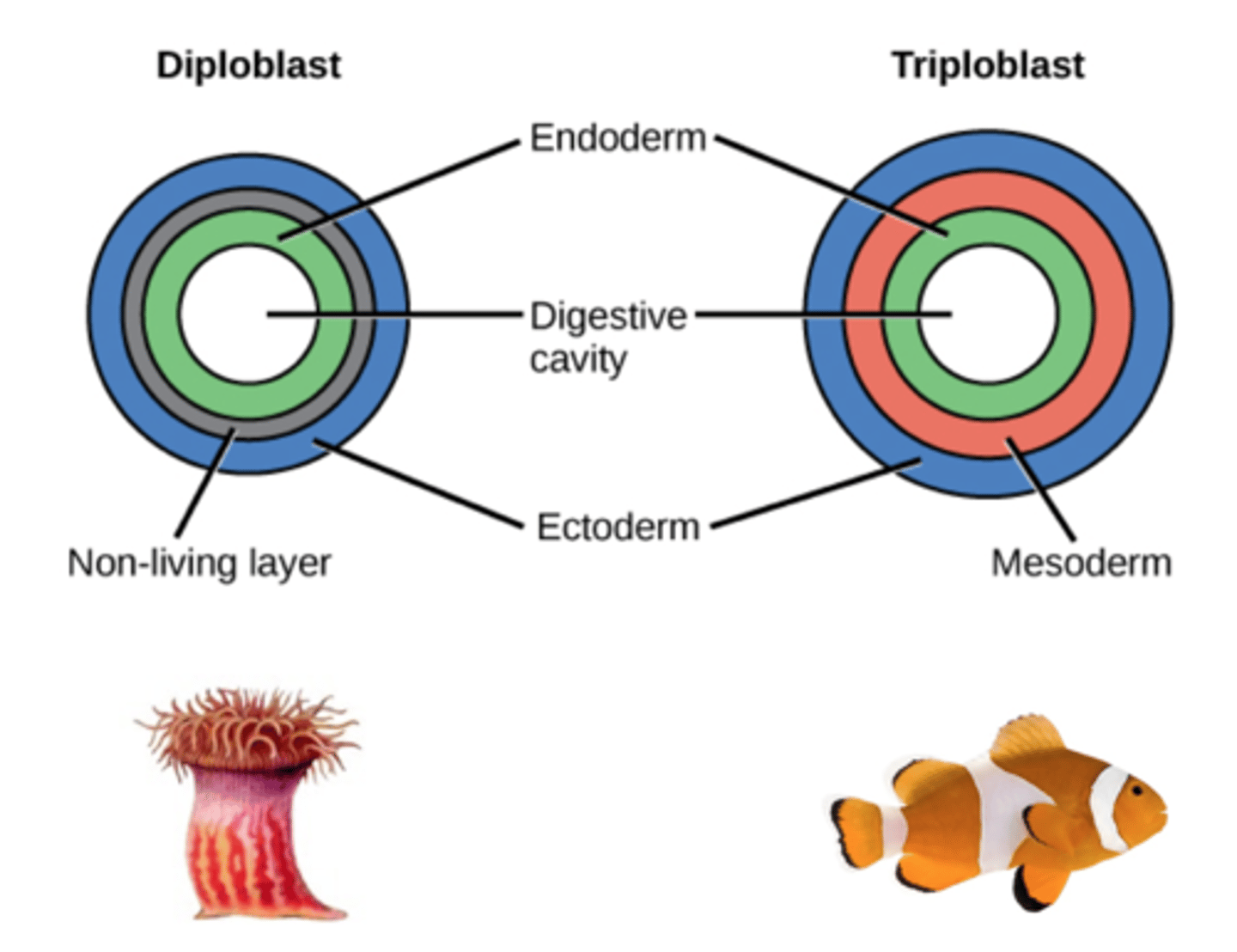
Can traits be condiered homologous if these traits come from different germ layers?
No. They must come from the same germ layer.
What is the blastophore?
The first opening to form in am embryo during gastrolation.
Describe a protostome
-Spiral, determinate cleavage
-Coelom forms from the splitting of mesoderm masses (schizocoelous)
-Mouth develops from the blastopore, anus forms later
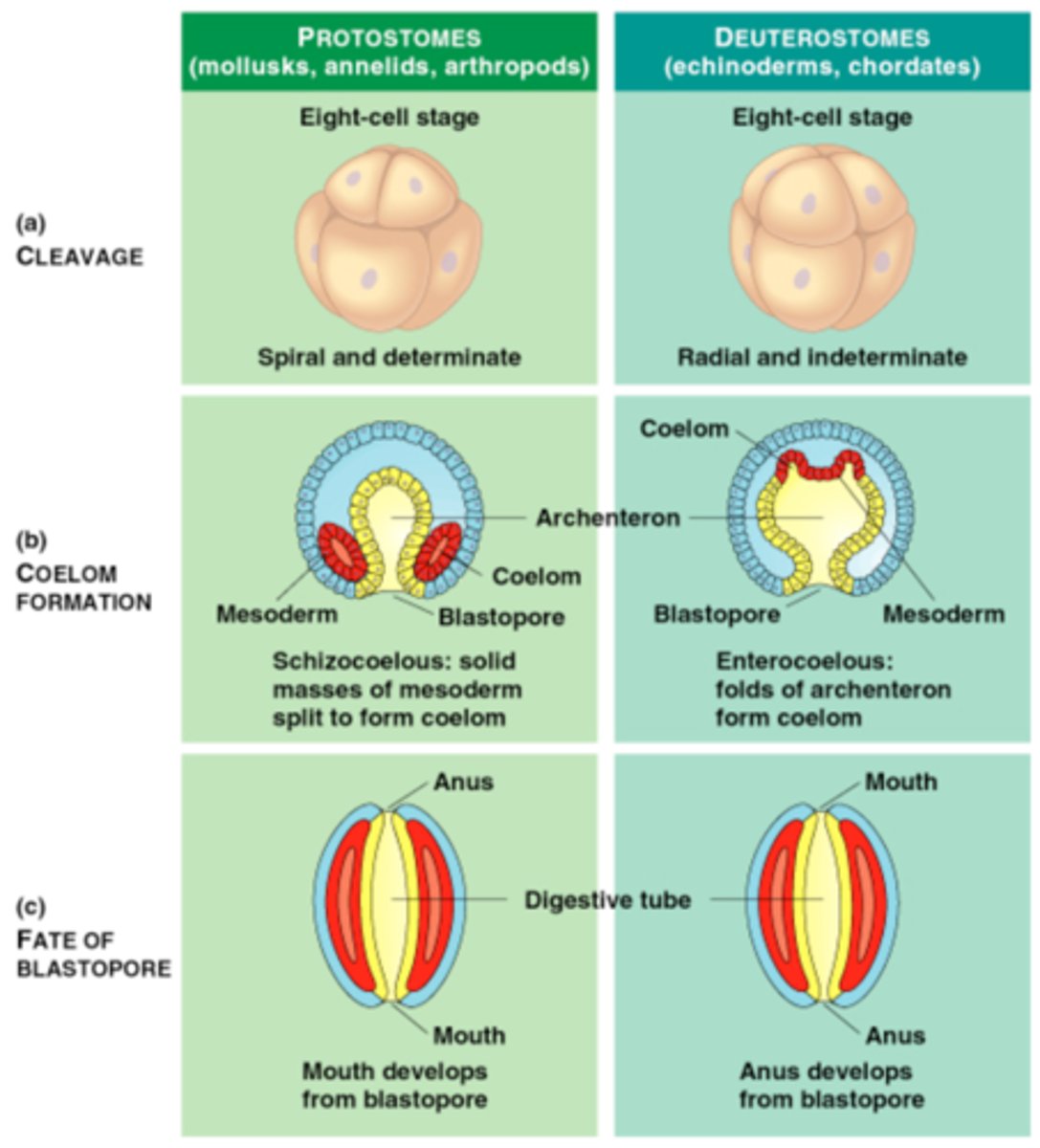
Describe a deuterostome
-Radial, indeterminate cleavage
-Folds of the archenteron form the coelom (enterocoulous)
-Anus forms from the blastophore, mouth forms later
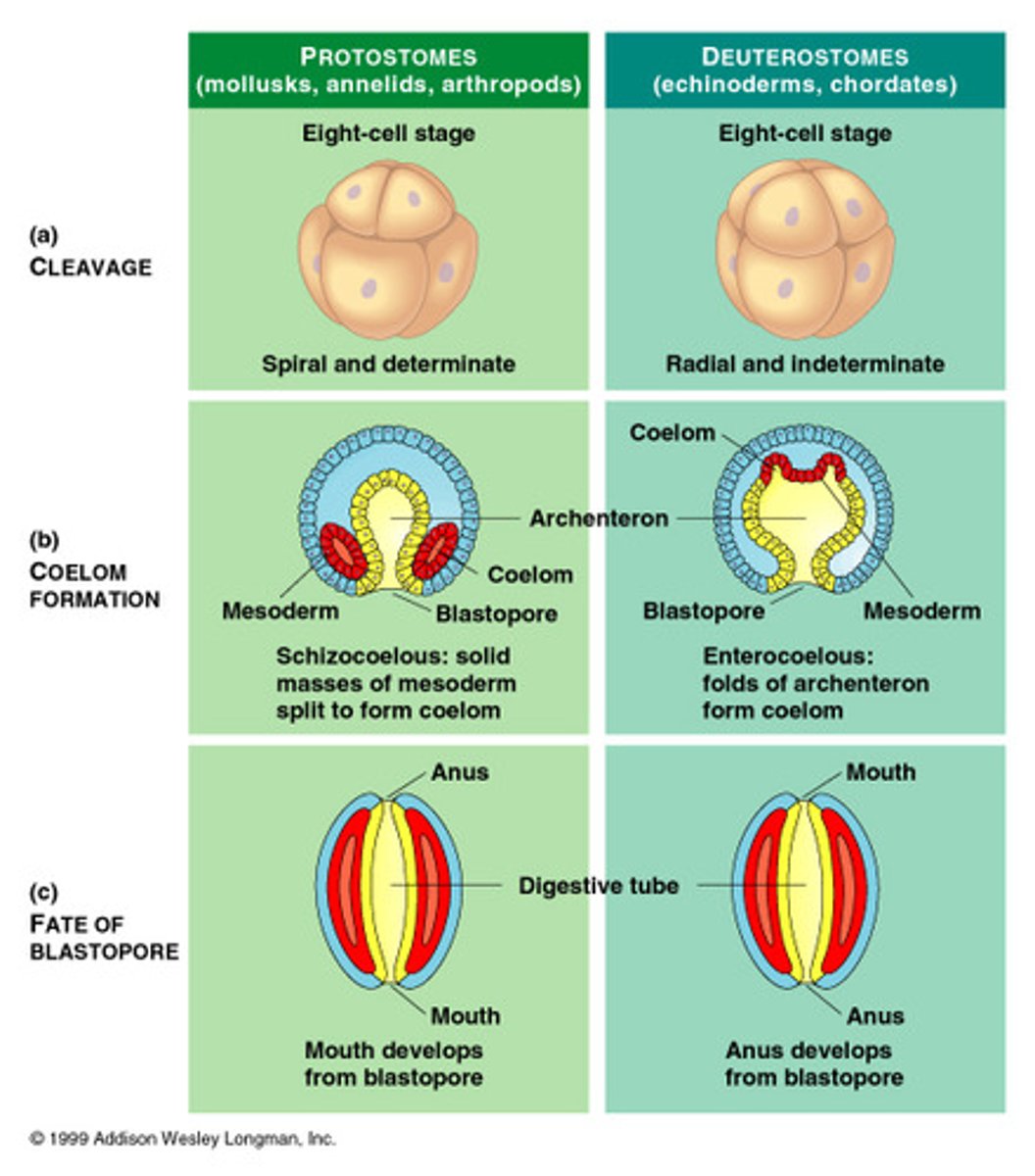
Based on embryonic development, vertebrates are:
-Bilarerally symmetrical
-Coelomates (have a coelem formed from the mesoderm)
-Triploblastic
-Deuterostomes
True or false: Vertebrates are Chordates
True
What are 5 characteristics of Chordates?
-Notochord
-Dorsal hollow nerve cord
-Pharyngeal slits
-Post-anal tail
-Endostyle (found in invertebrate Chordates)
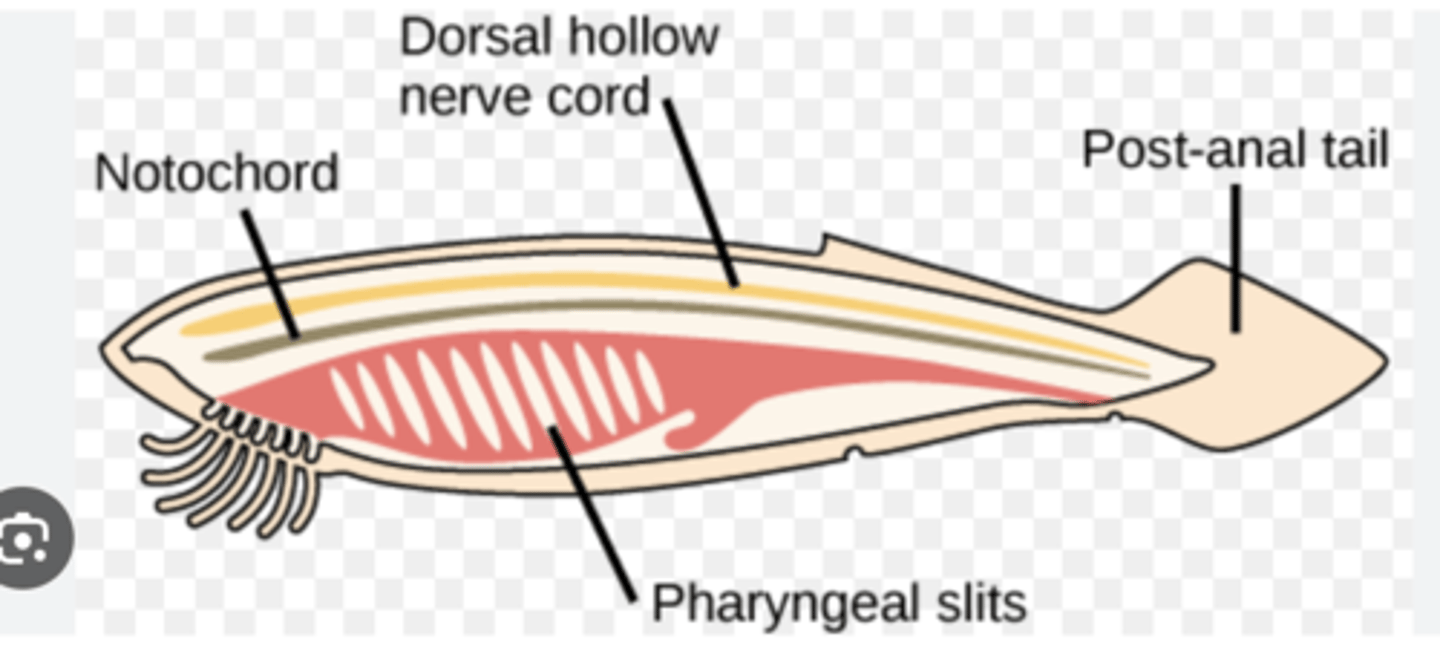
What is a notochord?
A stiff rod that allows for flexion but not compression.
What are 3 Subphyla of Chordata
-Urochordata (tunicate/sea squirt)
-Cephalochordata (amphioxus/lancelet)
-Vertebrata (aka Craniata)
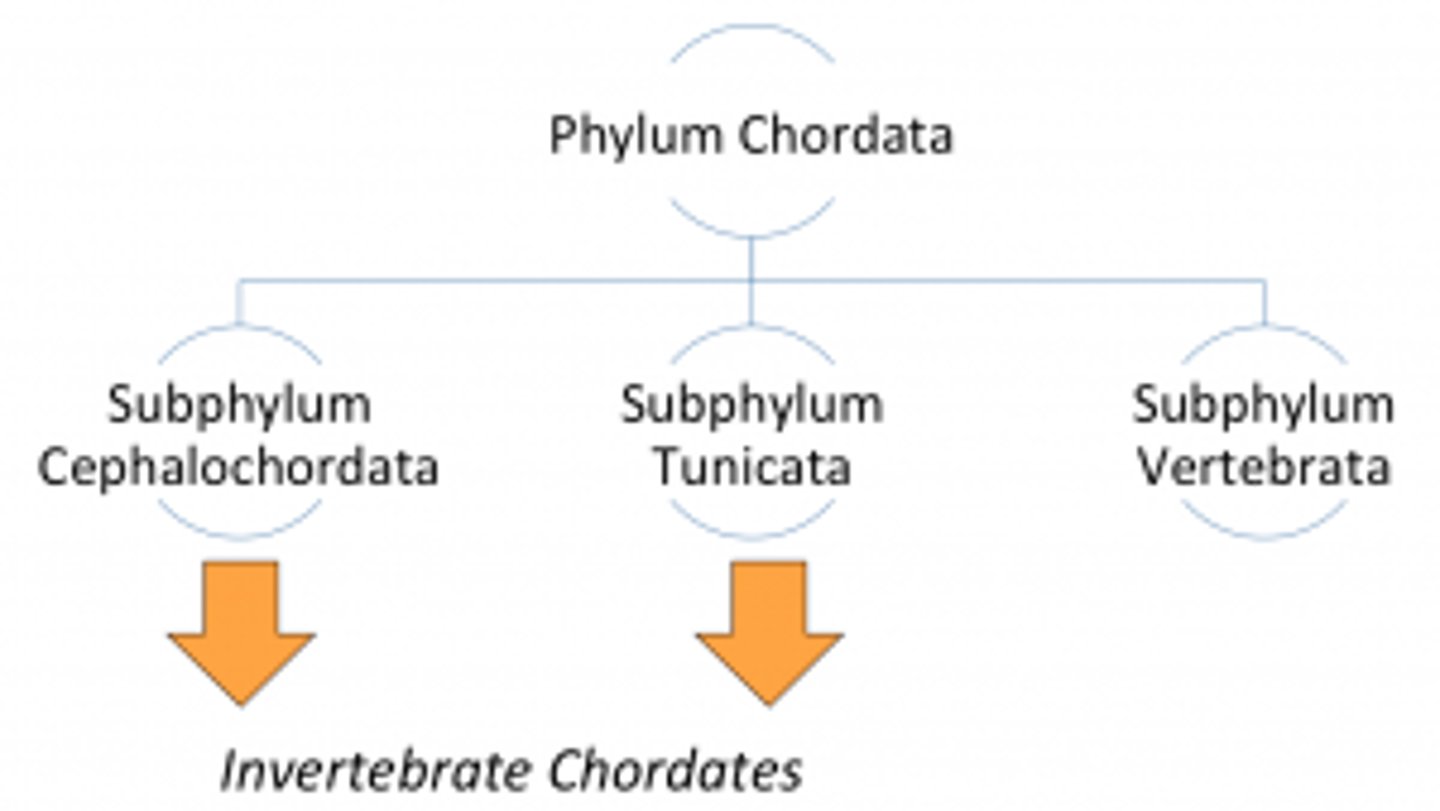
What is one of the most primitive Chordate species?
Pikaia. Found in the Burgess Shales and is believed to be from the Cambrian roughly 600 mya.
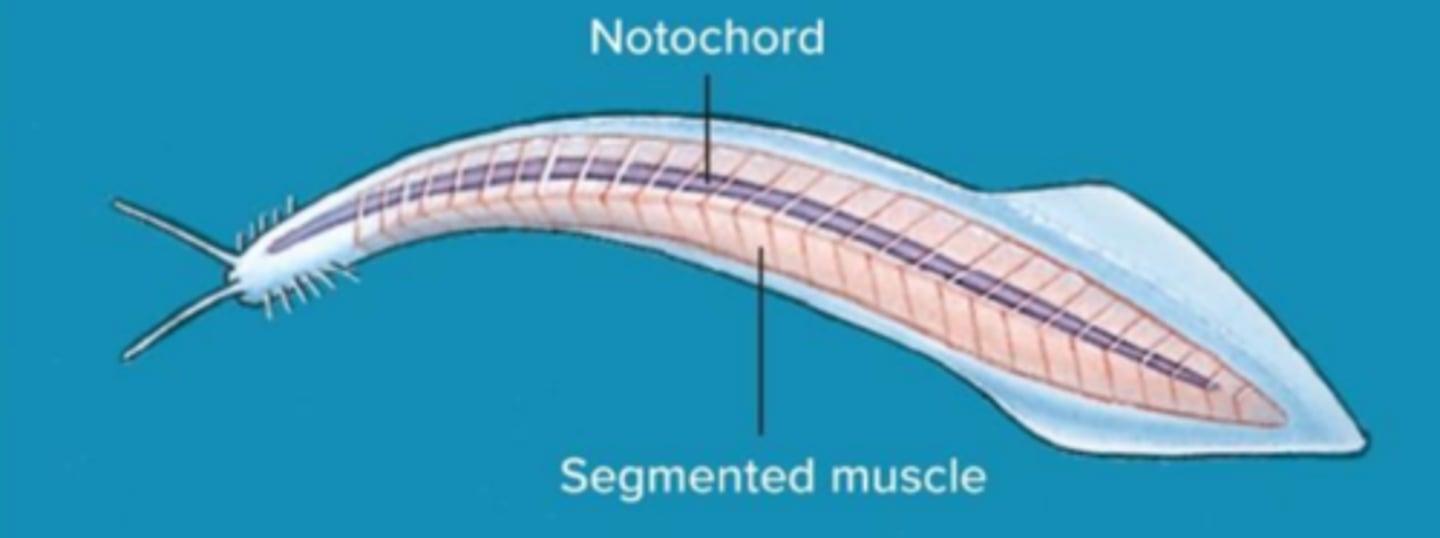
What is the name of one of the earliest Vertebrates?
Metaspriggina
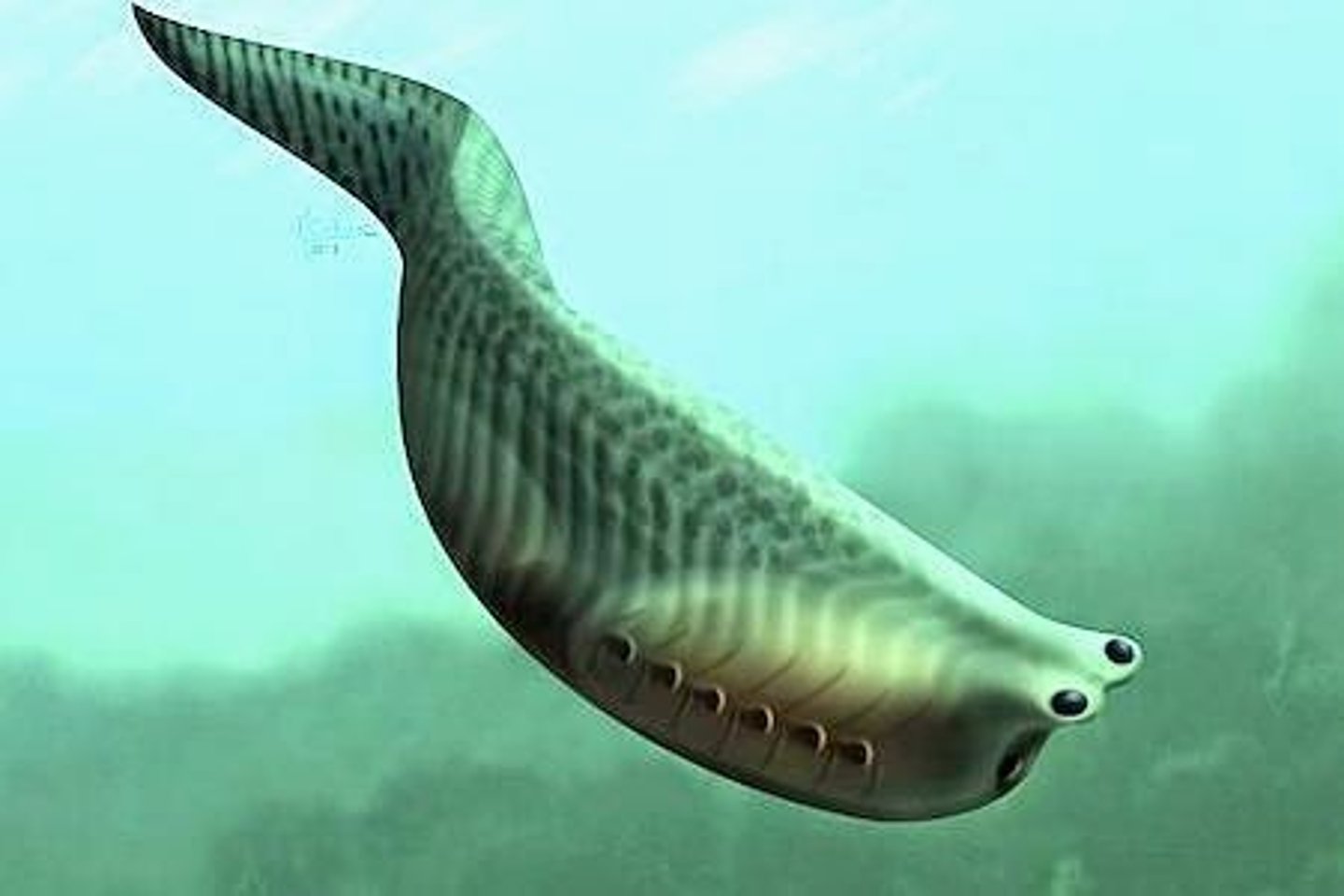
Describe Metaspriggina
-Earliest Vertebrate
-Found in the Burgess shale
-Showed a notochord, myomeres, brain, paired eyes, cartilages, fish like gills
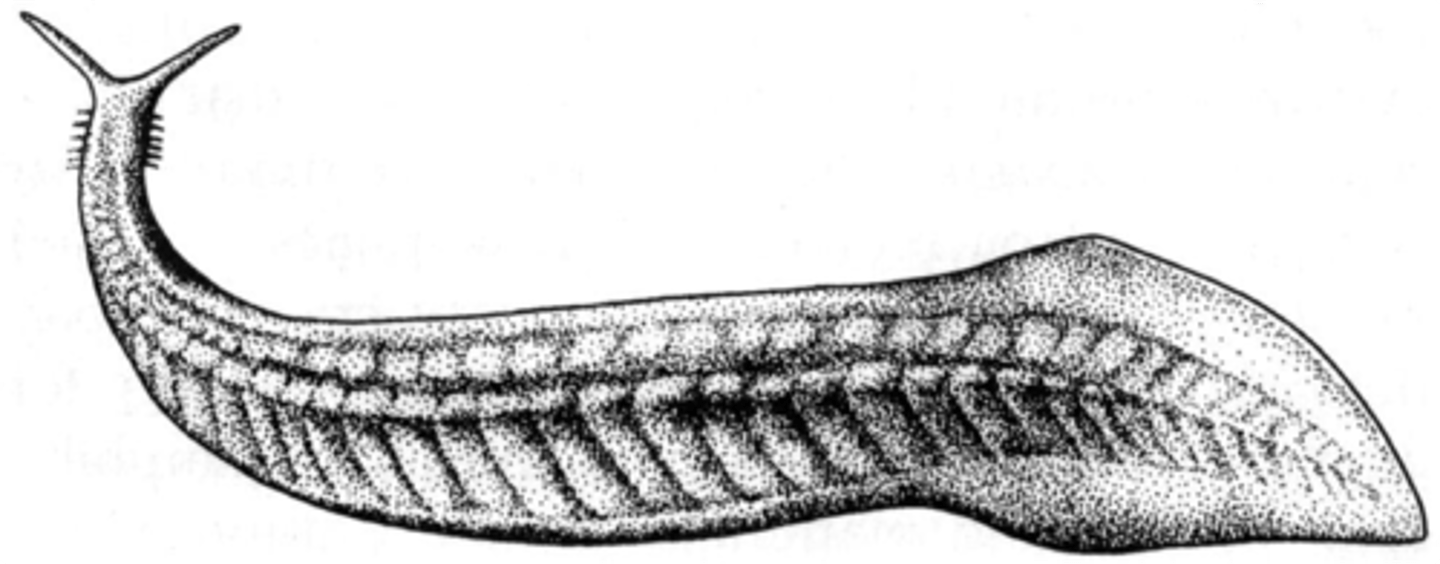
Are Conodonts vertebrates?
There are 2 groups of conodonts, protoconodonts and euconodonts. Most people agree protoconodonts are not vertebrates, and vertebrate paleontologists thing euconodonts are not vertebrates either.
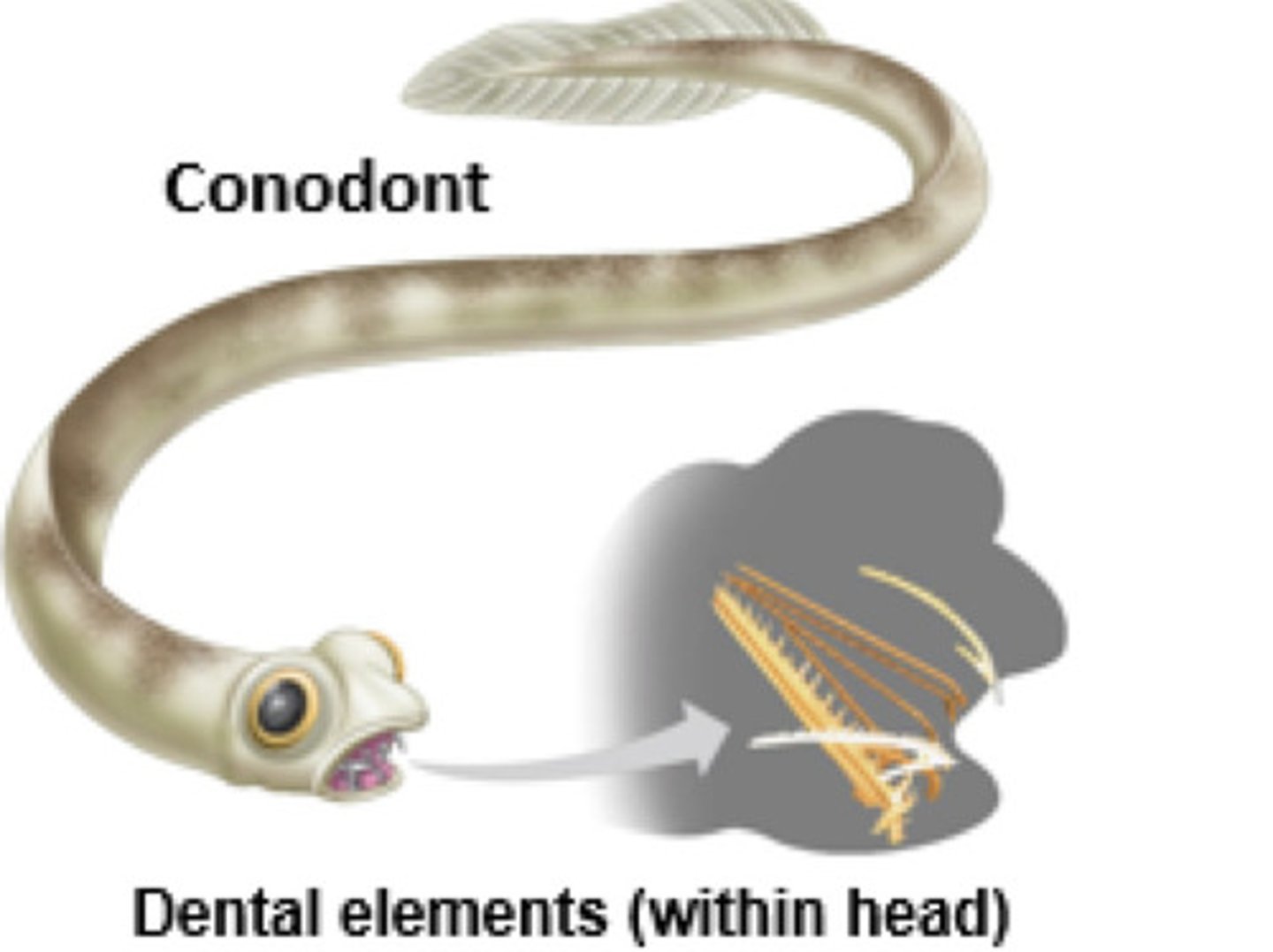
What 3 traits were important in transitioning from a Chordate like Pikaia to Vertebrata?
1. neural crest cells
2. Ectodermal placode
3. Hypomere
What are 12 characters found in Vertebrates?
1. Neural cerst and ectodermal placodes
2. Vertebrae
3. Cranium
4. Endoskeleton
5. Paired appendages
6. Integument with epidermal and dermal layers
7. Closed circulatory system with a chambered heart
8. Brain (tripartite)
9. 10-12 pairs of cranial nerves
10. Spinal nerves
11. Excretory system (nephrons)
12. Subpharyngeal gland developed into thyroid
What did the earliest Vertebrates look like?
Small, fish like. Had segmental myotomes (muscles) anchored to a notochord. No jaws (hadn’t evolved).
Where did Vertebrates originate?
Marine waters possibly with much diversification in fresh waters. May have been anadromous (migrated up rivers from sea to spawn). May have orignated in the Cambrian explosion (600 mya).
When did the first armoured vertebrates evolve?
485 mya (Ordovician, bone shards found in the Cambrian).
What are 3 requirements for homology?
1. Similarity of topology
2. Similarity of detailed underlying structure
3. Similarity of embryological development
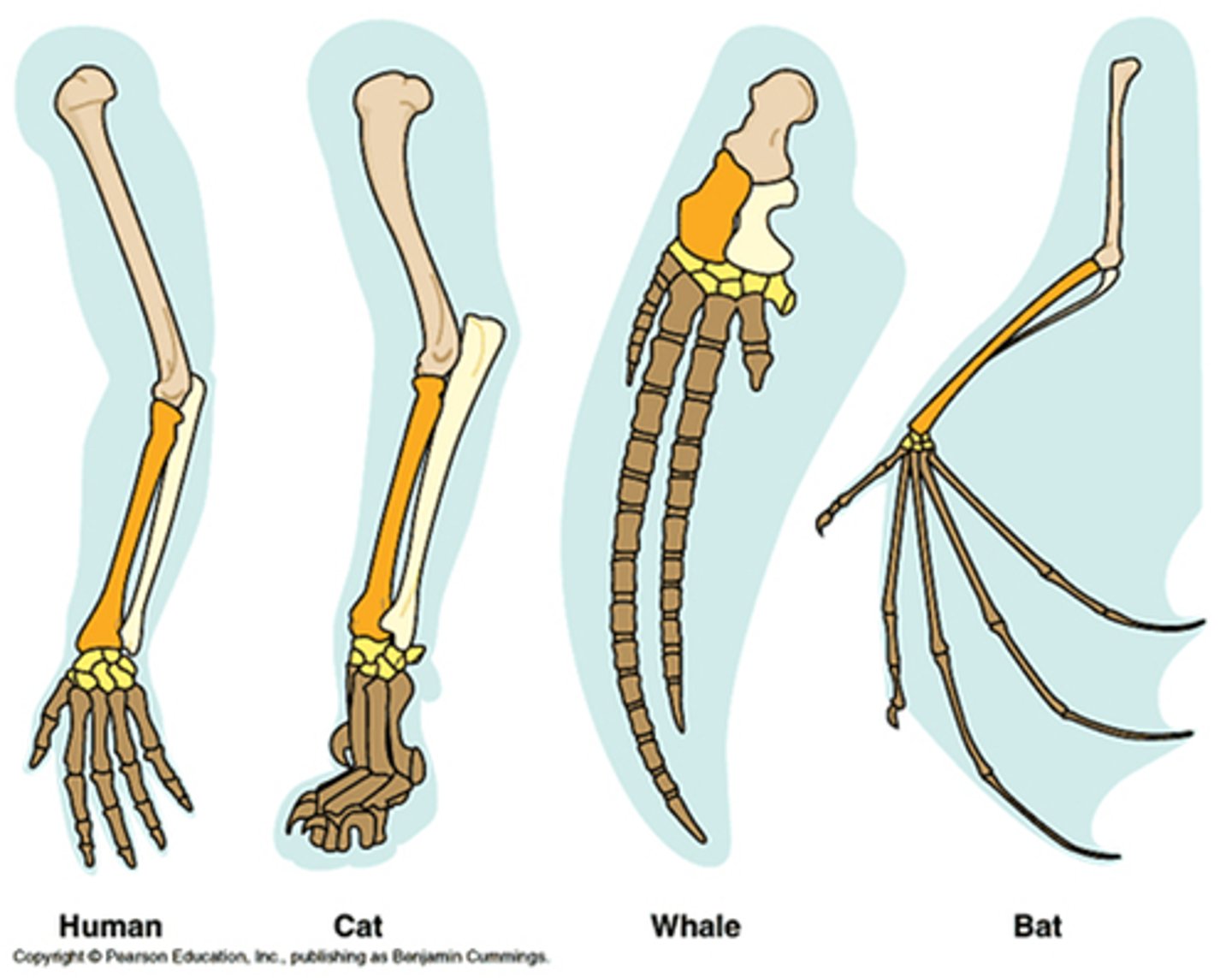
True or false: homologous structures must serve the same function.
False. Small bones in the mammalian middle ear translate sound and these are homolgous to functional ajws in early fish.
What are Agnathans?
Jawless fish.
Are Agnathans monophyletic?
No.
True or false: Agnathans have a muscular pharyngeal pump
True
What did early Agnathans look like
-Ostracoderms (bony skin)
-No jaws (filter feeders)
-Eyes present
-No true paired fins
-Numerous gill arches
-Two semicircular canals
-Cranial nerves similar to modern lamprey
When did early Agnathans arise?
Silurian and Devonian
What are the classes of Agnathans?
-Pteraspidomoprhi
-Anaspida
-Cephalaspidomorphi
-Thelodonti
What are the 2 Classes of living Agnathans?
-Mixini (Mixiniformes, Mixinidae)
-Petromyzontida (Petromyzontiformes)
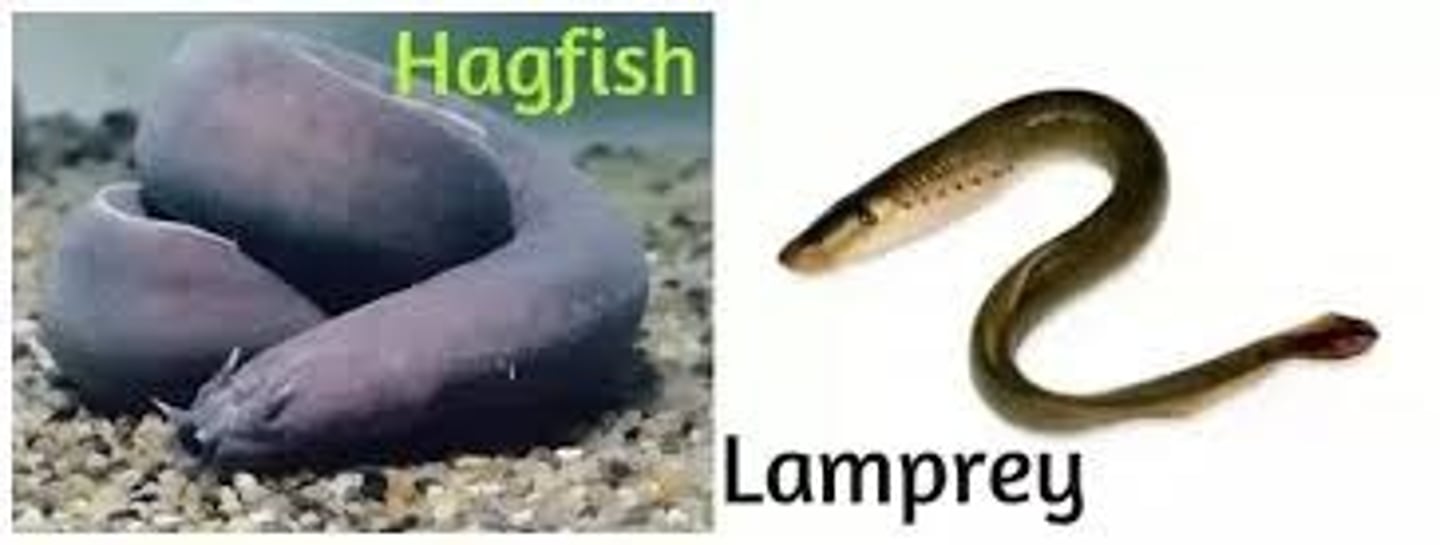
What is the scientific name for hagfish?
Mixiniformes
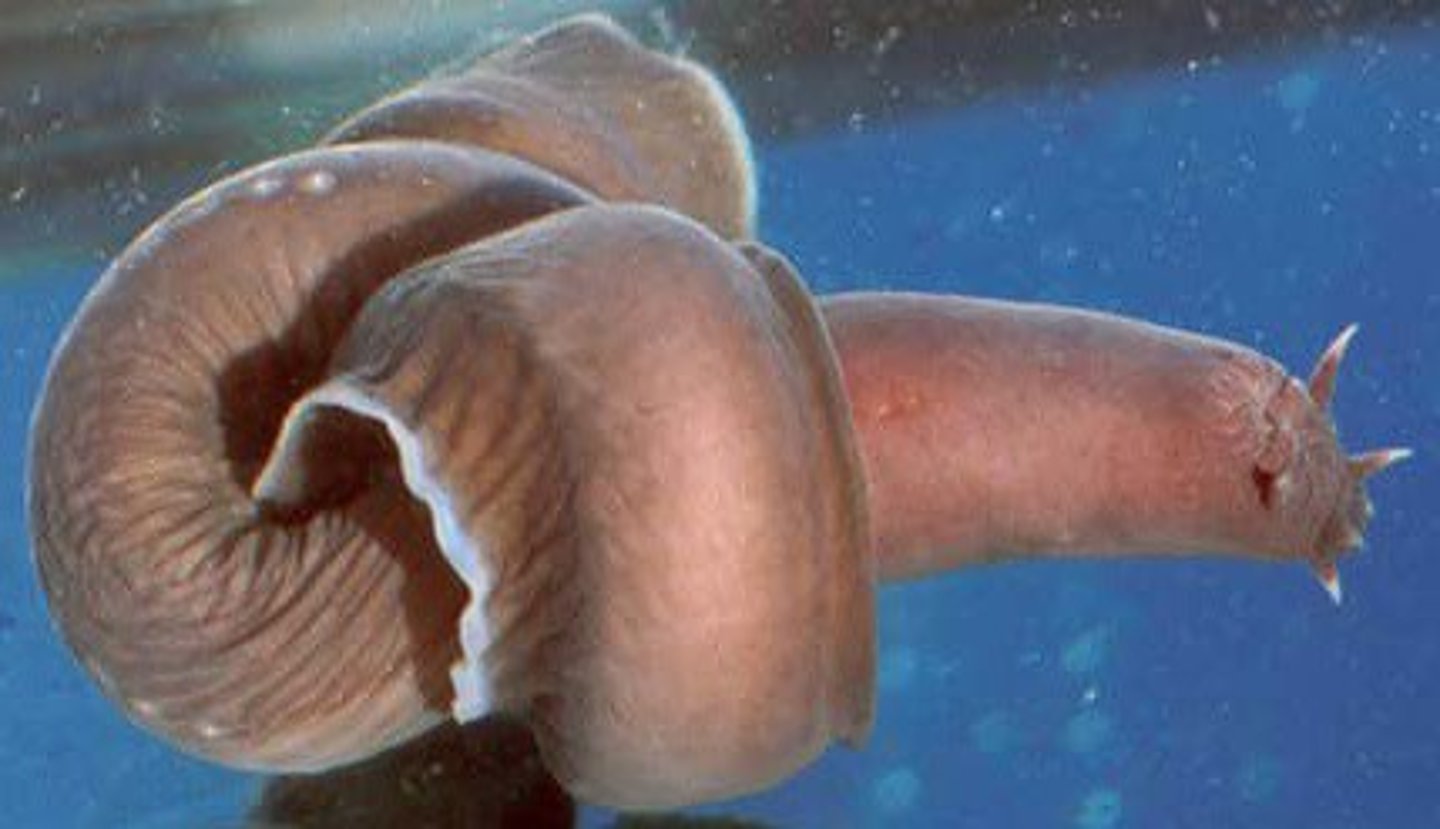
Describe hagfish
-Scavangers
-Isosmotic
-Knotting to aid feeding and escape capture
-Large eggs with direct development
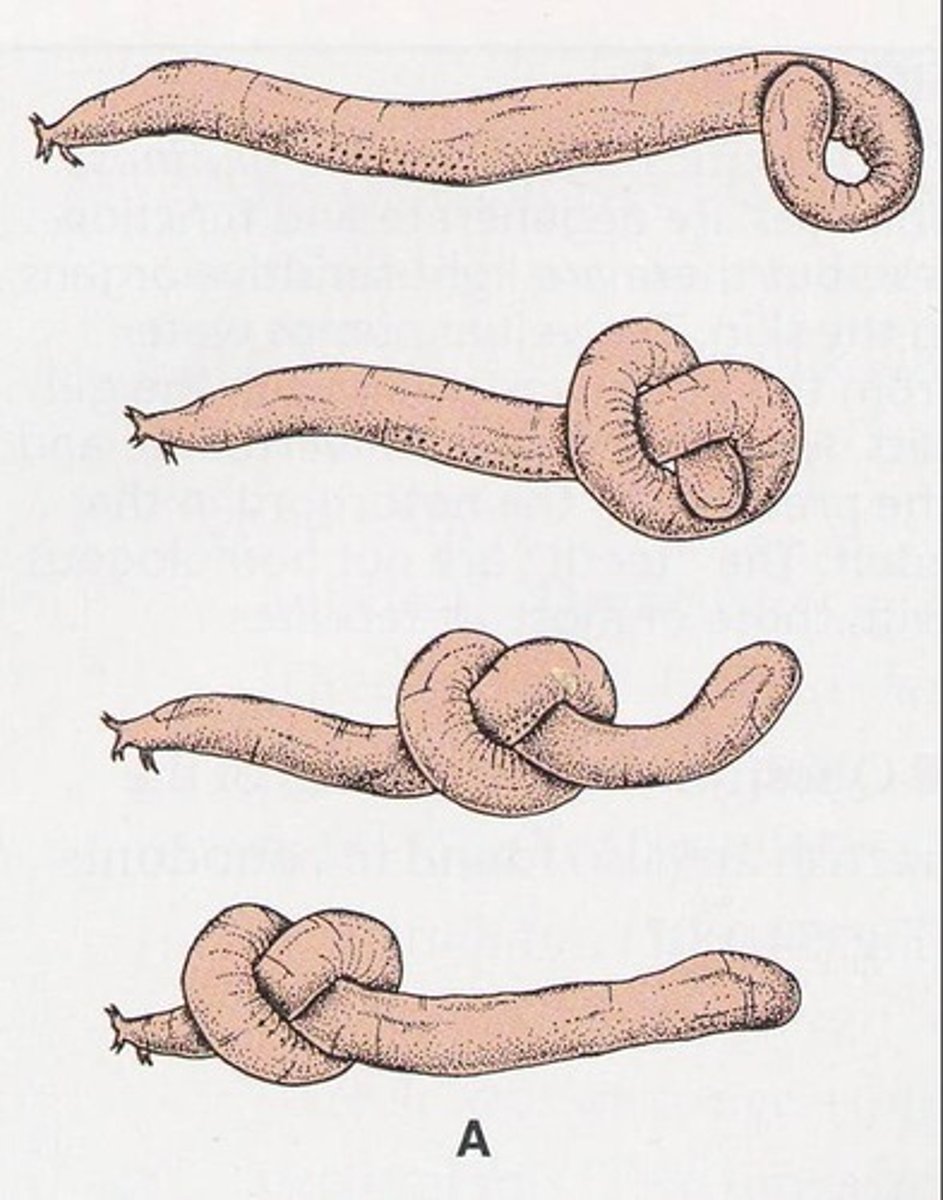
What is the scientific name for lamprey?
Petromyxontiformes.
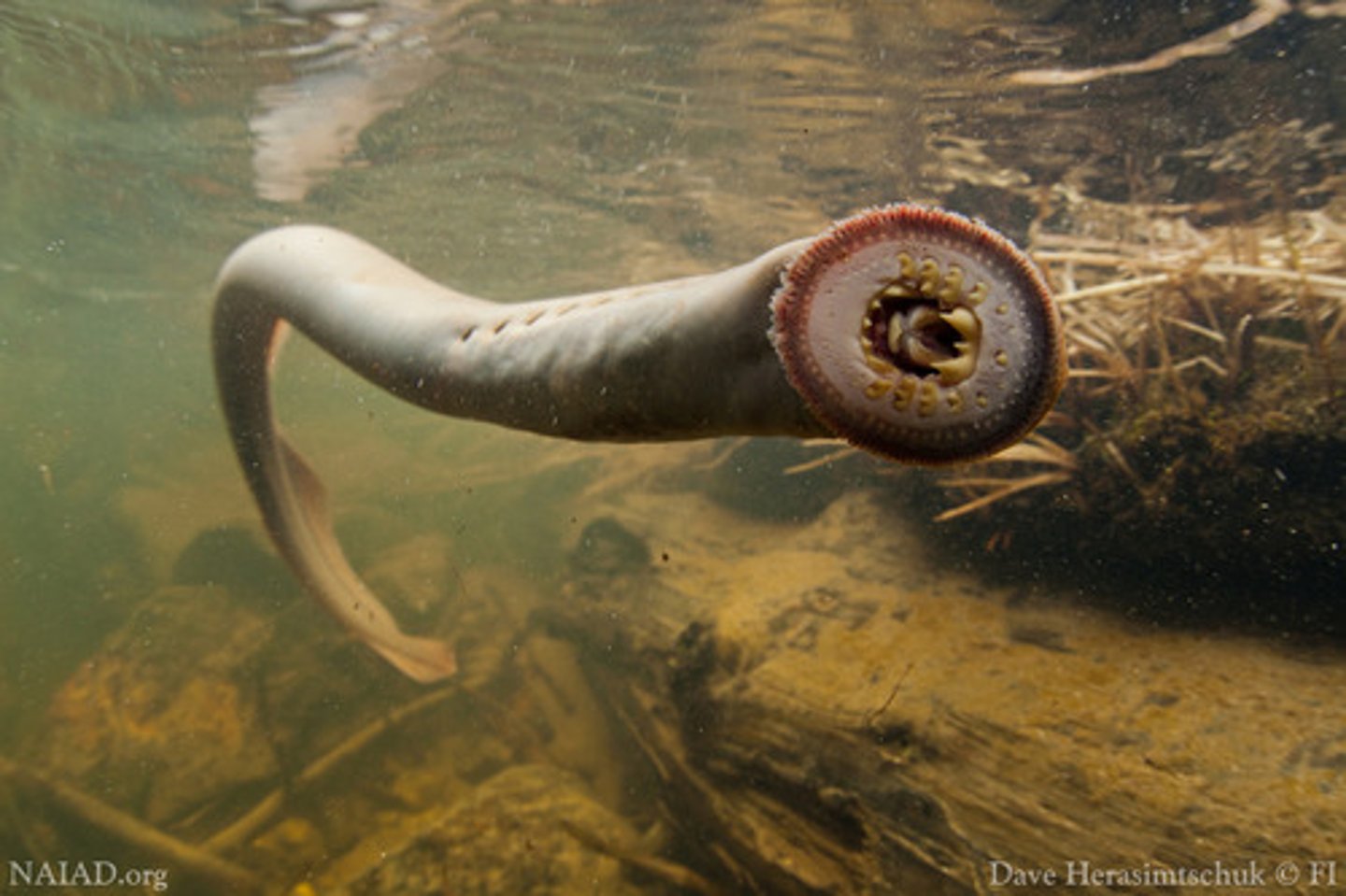
Describe lamprey
-Up to 1m
-Parasitic and non parasitic
-Lay eggs in redds (spawning nest)
-Freshwater or anadromous (migrate upstream to spawn)
